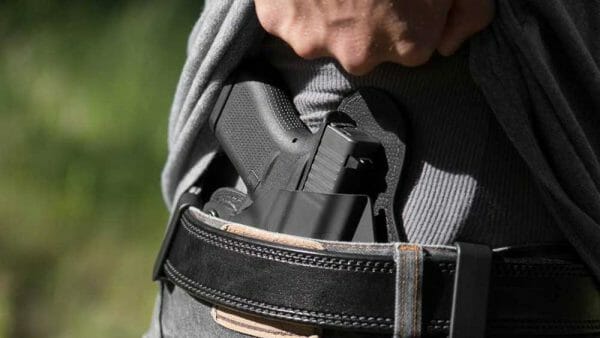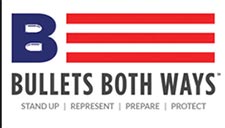By Richard D. Turnquist

Colordao – -(AmmoLand.com)- For me, it was Sandy Hook. For you, it could have been Thousand Oaks. Or Parkland. Or maybe it was Orlando. Mass shooting incidents tend to pique interest in becoming an armed citizen and perhaps a concealed carry permit holder.
The journey from unarmed potential victim to armed defender is not difficult, but there are definite steps to be followed and certain things to be aware of.
Carrying a firearm in public is an awesome responsibility, and those who are willing and able to do so must be mentally prepared for it. Nobody should strap on a gun and go looking for trouble. Concealed carriers go about their daily lives in a state of awareness and are prepared to defend themselves and others.
In this post, I will take a non-gun owning person from where they are to where they want to be. Any particular reader could already be at any stage of this journey, but refreshing knowledge is always helpful.
The first step is to learn and take to heart the four rules of gun safety. Whether you’ve fired 0 rounds or 10,000 rounds in your lifetime, it’s always a good idea to review these fundamental principles.
- Treat every gun as if it is loaded, even if you think it is not.
- Never point a gun at anything you are not willing to destroy.
- Keep your finger off the trigger until your sights are on target and ready to shoot.
- Be sure of your target and what is beyond it.
If you have never fired a gun before, the next step is to get some basic training. While many gun owners are happy to teach the uninitiated, I recommend finding a professional instructor. Many gun shops offer training by NRA Certified Instructors, and many police officers offer training courses as side businesses. A professional trainer will be able to instruct you on how to safely operate your firearm, how to hold it, how to aim and to pull the trigger smoothly and cleanly. As you learn they can offer tips for improvement.
If you want to carry a concealed weapon, the next step is to study the concealed carry laws in your state. Gun ownership and use are covered by a patchwork of laws at the state and federal level. In theory, every state and the District of Columbia must issue a concealed carry permit to qualified gun owners who meet certain legal and practical tests. In practice, states like California, Hawaii, Maryland, Massachusetts, New Jersey [good luck] and New York are “May-Issue”, meaning that a permit is required to carry a concealed handgun, and issuance of such permits is at the discretion of governmental authorities. The rest of the states are either “Shall Issue”, meaning that governmental authorities will issue permits to legally qualified citizens without discretion. So-called “constitutional” or permit-less carry means that legally qualified citizens can carry concealed handguns without a permit.

There is also the matter of reciprocity. Some states only recognize permits issued by that state. Others recognize permits issued by other states. This means that it is up to the gun owner to know the laws of the state he or she is travelling to. The same person who legally carries a concealed weapon in Colorado would be charged with a crime in New Jersey for carrying a concealed weapon there.
Whether it is required by law or not, taking a concealed carry training course is a great idea. In Colorado, it is a requirement for obtaining a concealed carry permit. In the typical 8-hour course, the instructor will cover gun safety, firearms laws in your state, mindset, tactical considerations, and a live fire qualification.
After completing the course, you will need to complete the necessary applications and pay the necessary fees. In Colorado, the process involves obtaining a form from your county sheriff, completing it, submitting it along with a filing fee (in my case it was about $150), getting fingerprinted and waiting. When I got my concealed carry permit in the immediate aftermath of the Sandy Hook shooting, I had to wait two full months to get it. Typically, the sheriff will run an expanded background check including an FBI check on the applicant before issuing the permit.
The next step involves deciding on the firearm you want to carry, the equipment you will need, where you plan to carry it (on-body, in a purse or backpack, etc.), and other considerations. You should test fire a gun before making the decision to purchase or carry it. Does it work right every time? Does it jam unexpectedly? Is it difficult to load new magazines? Is it comfortable to wear? Set aside some money for a quality holster and a solid gun belt. Look into cover garments that allow for enhanced concealment. Plan to buy a couple pairs of pants that are a size bigger to accommodate the extra equipment you will be carrying.
Finally, read books about the subjects of concealed carry, gun combat, mindset and preparation. Immerse yourself in the subject.
Carrying a concealed firearm for lawful purposes is not something to be undertaken lightly. Continue to attend advanced training in being a concealed carrier.
One awesome training class that is available in Colorado and Ohio for church security personnel, school administrators and others is the FASTER course (for Faculty Administrator Safety Training and Emergency Response) that is offered by Coloradans for Civil Liberties. In this class, students are taught about mass shooters, mindset, advanced combat techniques and medical combat triage and first aid. To learn more please see my four-part series at this link.
Because it doesn’t fit the narrative, the press doesn’t give extensive coverage to situations where an armed responder stops a mass shooting or prevents ordinary crimes. But such incidents do occur every day in America. It’s our mission at Bullets Both Ways to support the armed defender and the right to keep and bear arms.
About Bullets Both Ways
Bullets Both Ways supports and promotes the protection of our nation’s schools, churches, and communities.
We want to convince Americans and our legislatures that new protective security initiatives and additional school climate measures (quality of relationships among the students and the adults in a school) need to be enhanced and implemented within our nation’s schools.
Bullets Both Ways helps generate funds needed to assist with this task. Also, a generous portion of profits is donated to fund further protection measures within our schools and communities. www.bulletsbothways.com/


Yes, training is an important initial step. When my granddaughter was 8, I arranged for her to take twice-monthly lessons from a pair of local police officers. For two years, they taught her 1) law, 2) firearm safety, 3) marksmanship, 4) maintenance and cleaning, and 5) drawing from a holster. She fired well over 2,500 rounds of .22, and 4,000 round of 9mm, during that time. Now, at age 13, she is responsible and self-confident, and she is an experienced member of an active shooting competition team. (By the way, I am extremely proud of her!)